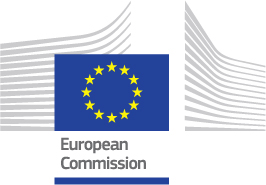Dealing with gender-based violence online
Course details
Online gender-based violence (OGBV) refers to harmful behaviours targeting individuals (primarily women, girls, and LGBTQIA+ people) based on gender, sexuality, or perceived identity in digital spaces. In recent years, OGBV has grown alarmingly, influencing students’ mental health, self-expression, and sense of safety, both online and offline.
This short course equips educators across Europe with the tools and knowledge to understand, prevent, and address OGBV among youth. Drawing from feminist pedagogy and an inclusive, sex-positive approach, the course focuses on training teachers to support students in navigating digital spaces with greater safety, empathy and awareness.
Through three dynamic modules, participants will explore the different forms of OGBV, including cyberbullying, image-based sexual abuse, deepfake pornography and cyber-harassment, and their impact on students. The course also examines the online manosphere and how platforms like TikTok and YouTube can sometimes reinforce harmful gender ideologies or exclusionary attitudes.
Rather than relying on fear-based or punitive strategies, the course encourages preventive education rooted in consent, emotional literacy and digital wellbeing. By the end of the course, teachers will be better equipped to identify signs of OGBV, support affected students and promote a culture of care, accountability and resilience in their learning environments.
The course is offered by the European School Education Platform. Visit our website for more information.
Duration and workload
Start and end date: open-ended, you can take this course (or any section) at your own pace
Duration: self-paced
Workload: 8-10 hours
This course is based on a version that ran from Monday, 09 to Wednesday, 25 June 2025. The original course provided participants with opportunities to interact during a specific active timeframe of 2.5 weeks, exchange ideas and engage in a peer assessment. However, we recognise that not everyone was able to attend during the scheduled timeline.
To make the course accessible to a wider audience, we’ve developed this self-paced format. This version allows you to explore the content and complete the activities at your own pace, whenever it suits you best.
What the self-study format means:
- Flexible schedule: You decide when and how to engage with the course materials. There are no deadlines, live sessions, or required meeting times.
- Independent learning: While the original course included discussions and peer reviews taking place in certain days and weeks, this format empowers you to work independently, using the same materials and guidance provided during the initial version. Please note that discussions in the forums and contributions on Padlets will not be moderated, allowing for a fully self-directed learning experience.
- Self-assessment: To replicate some of the reflective benefits of peer feedback, you will be encouraged to evaluate your own work using the provided assessment criteria.
Course competences
The course content and activities have been mapped against the competences defined by the European Framework for the Digital Competence of Educators and the SELFIE for TEACHERs tool.
- Professional engagement - Professional learning (through digital technologies) at B1 level
- Assessment - Assessment strategies at B1 level
- Facilitating learners' digital competence - Safety and wellbeing at B2 level
- Facilitating learners' digital competence - Responsible use at B1 level
For more information about the competences and associated proficiency levels see the SELFIE for TEACHERs toolkit.
Target audience
This course is designed for primary and secondary school teachers across Europe who are interested in addressing and preventing the spread of online gender-based violence among young people. Other educators, school leaders, and policymakers may also find it valuable.
Learning objectives
In this course, you will
- understand the diverse forms and impacts of online gender-based violence (OGBV) on children and adolescents through theoretical definitions and practical examples.
- identify and critically analyse the narratives and dynamics of the online "manosphere", mainstream platforms and influencers and their influence on young people by analysing and comparing case studies.
- learn how to foster safe, inclusive and respectful digital environments in and out of the classroom by applying feminist pedagogical approaches and sex-positive principles to the understanding of OGBV.
- gain practical tools and apply concrete strategies and resources to support students experiencing OGBV and to prevent its normalisation by applying them in a lesson plan and engaging in peer discussions.
This content is offered by the European Commission. The European Commission is the European Union's politically independent executive arm. It is alone responsible for drawing up proposals for new European legislation, and it implements the decisions of the European Parliament and the Council of the European Union.

Schedule
- How this self-paced course works
- Module 1: Mapping the landscape: types and impact of OGBV
- Module 2: Countering the manosphere: pedagogical strategies against gender norms and radicalisation
- Module 3: Positive and preventive approaches to OGBV
- Certificate of completion


